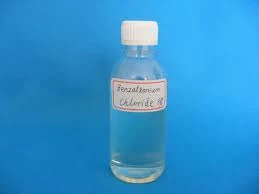Poly Aluminium Chloride in Water Treatment | Efficient Coagulation Solutions
The Use of Poly Aluminium Chloride in Water Treatment
Water treatment is a critical process that ensures the safety and quality of drinking water, as well as the effective management of wastewater. Among various coagulants used in water treatment, Poly Aluminium Chloride (PAC) has gained prominence due to its effectiveness and versatility. This article explores the characteristics, benefits, and application of PAC in water treatment processes.
What is Poly Aluminium Chloride?
Poly Aluminium Chloride is an inorganic polymer coagulant formed from aluminium hydroxide and hydrochloric acid. It is known for its high charge density and large molecular weight, which enhances its performance in coagulating and flocculating suspended solids in water. PAC is available in different forms, including solid and liquid, making it suitable for various water treatment applications.
The Role of PAC in Water Treatment
PAC plays a fundamental role in the coagulation-flocculation process, wherein fine particles suspended in water are aggregated into larger particles, or flocs, which can then be easily removed. The mechanism involves several steps
1. Charge Neutralization PAC, being positively charged, neutralizes the negative charge of suspended particles, which allows them to come together. 2. Bridge Formation The high molecular weight of PAC enables it to bind multiple particles together, creating bridges that facilitate the formation of larger flocs.
3. Settling Once the flocs have formed, they settle more quickly due to their increased size and weight, making it easier to remove them through sedimentation or filtration.
Advantages of Using PAC
use of poly aluminium chloride in water treatment

1. High Efficacy PAC is highly effective at a range of pH levels, making it versatile for treating various water qualities. Its performance is generally superior to traditional aluminum salts, such as alum.
2. Reduced Sludge Production One of the significant advantages of PAC is that it tends to produce less sludge compared to other coagulants. This reduction not only decreases the volume of waste to be disposed of but also minimizes the costs associated with sludge handling and treatment.
3. Improved Water Quality PAC helps in the removal of turbidity and organic matter, resulting in clearer and cleaner water. This improvement is crucial for meeting health standards and ensuring public safety.
4. Cost-Effectiveness Despite being a more advanced coagulant, PAC is often available at a competitive price, and its efficiency in reducing chemical use further enhances its cost-effectiveness.
Applications
PAC is widely used in drinking water treatment, industrial wastewater management, and the treatment of surface waters. Its application ranges from municipal water treatment plants to various industries, including paper making, pharmaceuticals, and food processing.
Conclusion
Poly Aluminium Chloride has emerged as an essential chemical in the field of water treatment due to its effectiveness and multiple benefits. Its capability to efficiently remove contaminants while producing less sludge and reducing operational costs makes it a preferred choice in both municipal and industrial settings. As the demand for clean and safe water continues to rise, the role of PAC in water treatment processes is likely to become even more significant, contributing to sustainable water management practices globally.
-
Water Treatment with Flocculant Water TreatmentNewsJun.12,2025
-
Polymaleic AnhydrideNewsJun.12,2025
-
Polyaspartic AcidNewsJun.12,2025
-
Enhance Industrial Processes with IsothiazolinonesNewsJun.12,2025
-
Enhance Industrial Processes with PBTCA SolutionsNewsJun.12,2025
-
Dodecyldimethylbenzylammonium Chloride SolutionsNewsJun.12,2025





